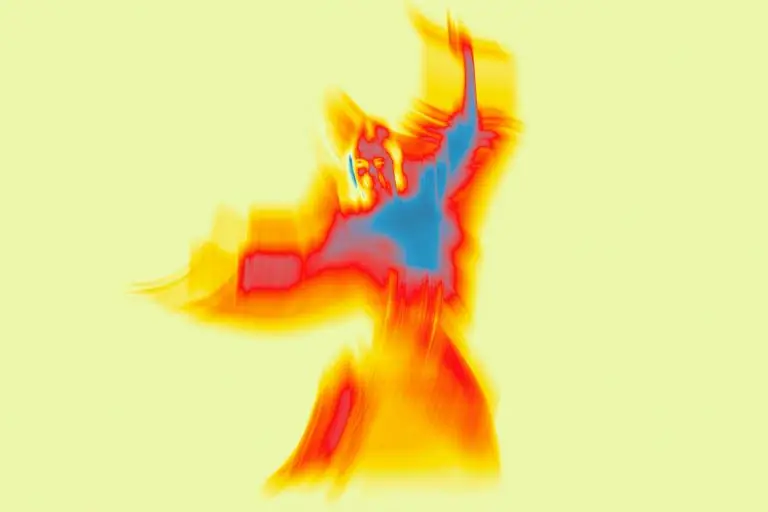Unlocking the Subtle Body: How Pranayama Activates Your Energy Centres
If you’ve ever taken a deep breath and felt an unexpected sense of calm or clarity, you’ve already had a glimpse of how powerful breath can be. In yogic traditions, breath isn’t just a way to oxygenate the body—it’s the gateway to awakening your inner energy, or what’s often called the subtle body.
Through the practice of pranayama—a series of controlled breathing techniques—you can begin to tap into your body’s energy centres (chakras) and awaken dormant vitality. But how does it all work, and why does it matter? Let’s take a deeper, yet accessible look.
What is the Subtle Body?
In modern anatomy, we talk about muscles, organs and nerves. But yoga gives us another layer of understanding: the subtle body, also known as the pranamaya kosha.
This isn’t a physical structure, but a network of energy channels (nadis), vital force (prana), and energy centres (chakras) that govern our mental, emotional, and spiritual wellbeing. When your energy is flowing freely, you feel grounded, creative, focused, loving, expressive and in tune. When it’s blocked, you might feel the opposite—tired, anxious, or stuck.
Enter Pranayama: The Breath of Life
The word pranayama comes from two Sanskrit roots: prana (life force or energy) and ayama (expansion or control). So pranayama literally means the expansion or control of life force through breath.
By consciously regulating your breath, you can shift your energetic state—calming the mind, releasing emotional blocks, and stimulating different chakras in the body. Pranayama is both a preparation for deeper meditation and a powerful tool in its own right.
How Pranayama Activates the Energy Centres
There are seven main chakras in the body, each linked to different psychological and physiological states. While there are many ways to work with chakras—such as sound, visualisation or movement—breath is perhaps the most direct and accessible.
Let’s look at how pranayama affects these energy centres:
1. Root Chakra (Muladhara) – Grounding
When your breath is shallow or erratic, your nervous system stays on high alert. Practices like deep belly breathing or dirga pranayama help you drop into your body, calm the mind, and feel safe—core qualities of the root chakra.
Try this:
Inhale into your belly for a count of four, exhale slowly for a count of six. Repeat for 3–5 minutes daily.
2. Sacral Chakra (Svadhisthana) – Creativity & Flow
Located just below the navel, this centre relates to fluidity and emotion. Nadi Shodhana (alternate nostril breathing) balances the left and right hemispheres of the brain, creating emotional harmony and creative flow.
Try this:
Use your thumb and ring finger to alternate nostrils. Inhale left, exhale right. Inhale right, exhale left. Do 5–10 rounds.
3. Solar Plexus (Manipura) – Confidence & Power
The fire element rules this chakra. Kapalabhati (breath of fire) or bhastrika (bellows breath) are energising techniques that build internal heat, stoke digestive fire, and awaken your personal power.
Caution:
Skip these if you’re pregnant, have high blood pressure or heart issues. Always start gently.
4. Heart Chakra (Anahata) – Love & Compassion
This chakra thrives on openness. Heart-focused breathing, where you inhale gently into the chest and visualise soft green light, can open emotional channels and foster compassion—for yourself and others.
Try this:
Inhale for 5 counts into your heart space. Hold briefly. Exhale for 5 counts. Add a positive affirmation like “I am open to love”.
5. Throat Chakra (Vishuddha) – Expression & Truth
Ujjayi breath, often used in yoga flows, creates a gentle ocean-like sound in the throat. This vibrational breath activates the throat chakra and clears blocks in communication.
Try this:
With a slight constriction at the back of the throat, inhale and exhale slowly through the nose, creating a whisper-like sound.
6. Third Eye (Ajna) – Intuition & Insight
This chakra is about inner vision and clarity. Practising kumbhaka (breath retention) after a steady inhale can quiet the mental chatter and activate deep insight.
Try this carefully:
Inhale for 4 counts, hold for 4, exhale for 4. Gradually increase as your comfort grows.
7. Crown Chakra (Sahasrara) – Spiritual Connection
Breath becomes very subtle at this level. Meditative breathing—gentle, effortless, and natural—helps you access a state of oneness and spiritual awareness.
Try this:
Simply observe your breath without changing it. Focus on the space between thoughts. Let go.
What Happens When Energy Starts to Flow?
Many people report feeling lighter, clearer or more emotionally balanced after practising pranayama. You might also experience tingling, warmth, or a sense of expanded awareness. These are signs that prana is moving through previously blocked areas.
As you develop consistency, you may notice:
Improved mood and resilience
Sharper intuition
Enhanced creativity
A deeper sense of spiritual connection
It’s not always dramatic—some days might feel ordinary—but subtle shifts can lead to profound transformation over time.
How to Begin Your Practice
Here’s how to safely start unlocking your subtle body with pranayama:
Create a calm space – Sit comfortably, spine upright.
Start simple – Begin with 5 minutes of deep breathing before progressing.
Stay consistent – Daily practice creates cumulative effects.
Respect your limits – Never force or strain your breath.
Combine with other practices – Yoga asana, meditation and healthy living support your energy system.
Final Thoughts: Breath as the Bridge
Pranayama is more than a wellness trend—it’s a bridge between the physical and energetic self. It grounds you, lifts you, centres you, and connects you to something beyond the everyday. Whether you’re seeking more energy, emotional healing, or spiritual depth, your breath is ready to guide the way.
So the next time you sit down to breathe, remember: you’re not just inhaling air. You’re awakening a deep intelligence within—the wisdom of your subtle body.
Extra Resources
Limited Time Price Reductions: Go here to learn more about my online courses.
Why not treat yourself to a Meditation Retreat in the beautiful Devon Countryside?
This post may also interest you: Breathwork to Release Emotions: Healing Breathwork for Emotional Freedom
Best Wishes,
David.
© D. R. Durham, All rights reserved, 2025.




